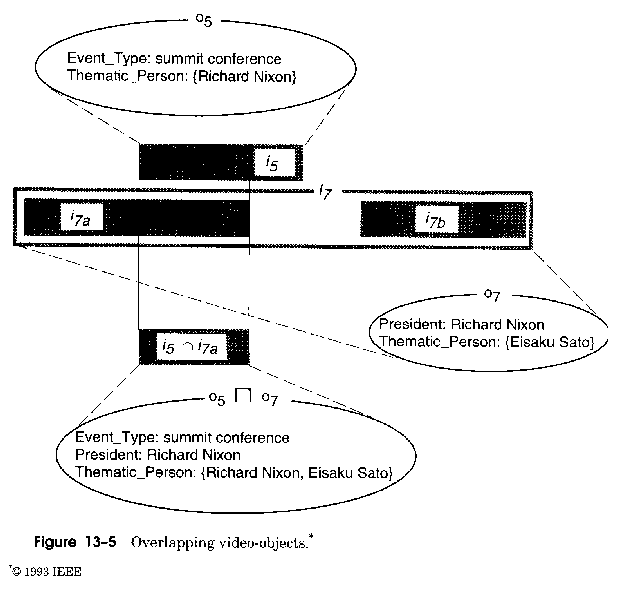

13.5 Video Object Data Model
Problems:
(1) Difficulties in Defining Attributes :
A description for a semantically meaningful scene is represented as a tuple:
(starting frame#, ending frame#, other attributes to describe the scene).
Problems:
[a] Depending on the describers' viewpoints, so it may have multiple different
sets of attribute definitions.
[b] it is difficult to describe the entire contents of a video disc at
one time, the incrementally added descriptions will result in a difficulty
in defining all attributes in advance.
[c] Conventional ODBMS only provide a mechanism for the inheritance of
attribute structures and methods among classes.
(2) Difficulties in Querying :
In conventional database systems, user must know the attribute structures
or class structures in order to retrieve desired objects. Not inconvenient.
A mechanism is necessary to decrease the required number of descriptions
of attribute definitions for objects.
(3) Treatment of Composed Objects :
Most conventional ODBMSs do not have sufficient facility to generate new
classes dynamically.
Basic Ideas
the feathers of this video object Model:
(1) Schema-less Description of Database
(2) Interval Inclusion Inheritance
(3) Composition of Video-Objects Based on is-a Hierarchy.
Arbitrary attributes can be attached to each video object whenever they
are necessary.
Ex: A video scene concerned with JOHN and the user want to use his
name as the attribute value. If the name attribute does not exist in
the database, can add it to this video object at any time.
The notion of inheritance based on the interval inclusion relationship.
Ex: Consider a night scene as a video-object A and another object B is
defined over some portion of object A. The object B is also a night scene.
(Has the same attribute and value.)
Video Objects
it consists of
(1) its object identifier ( oid for short)
(2) an interval,
(3) and a collection of attribute/value pairs.
Each video-object has a unique object identifier. An interval
is presented by the pair of starting frame# and ending frame# .
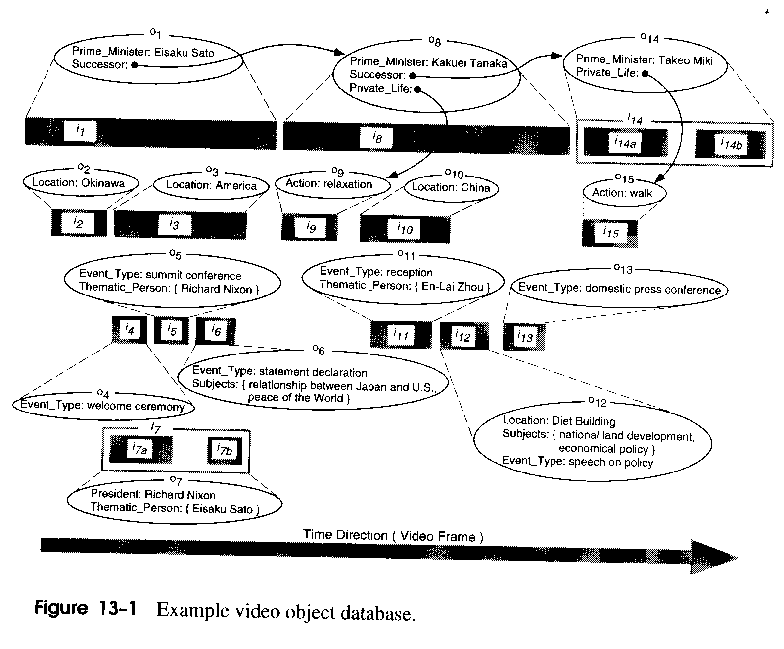
Generalization Hierarchy for Values and Objects:
a1 a2 means that a1 is-a a2 and that the atomic value a1 is more
informative than the atomic value a2.
Example: Figure 13-2
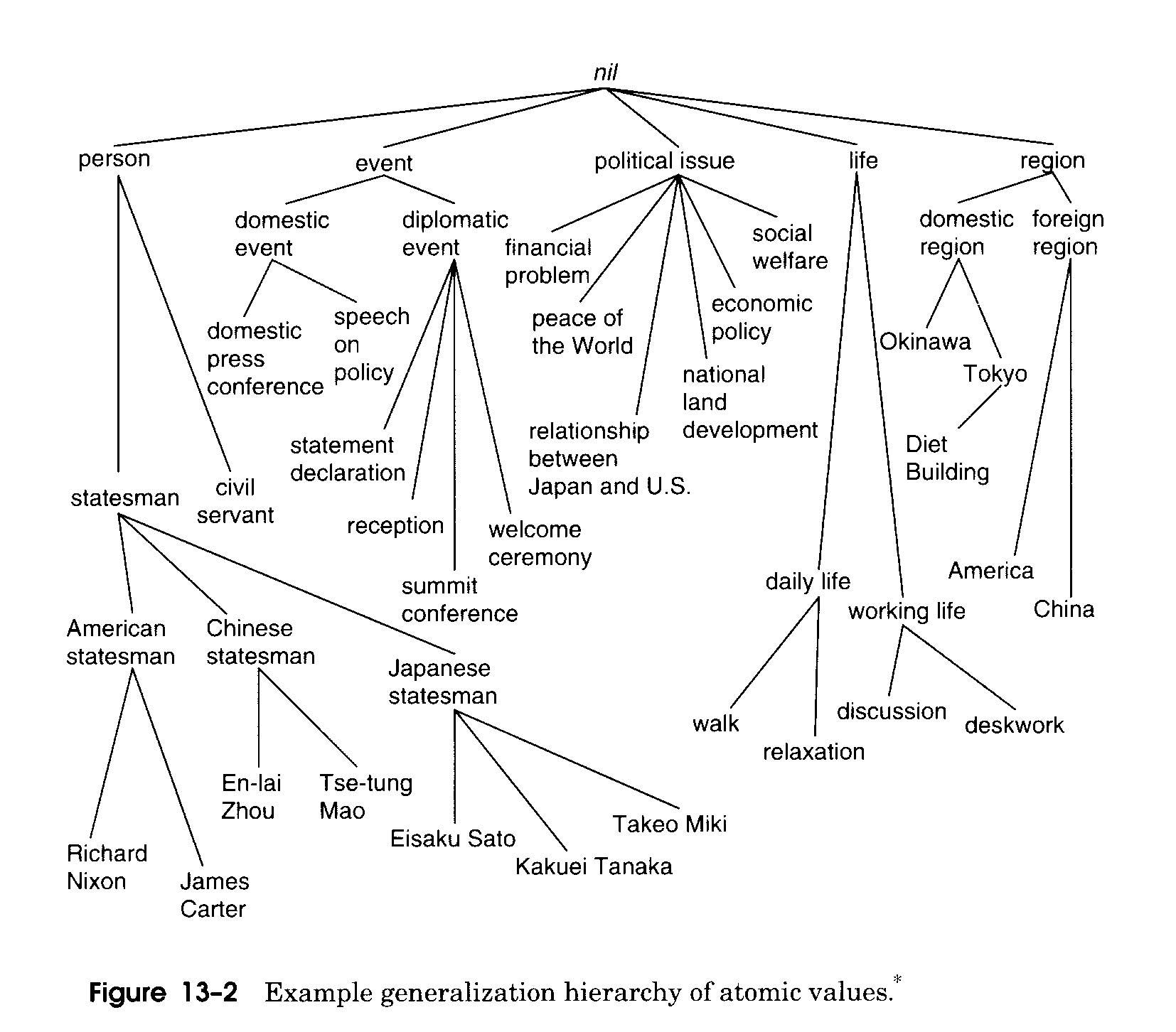
Least Upper Bound of Values:
v1= [ Prime_Minister: Kakuei Tanaka, Location:
Tokyo, Action: relaxation],
v2 = [ Year: 1974, Location: Tokyo, Action:
Walk],
V1  V2 =[ Location:
Tokyo, Action: Walk],
V2 =[ Location:
Tokyo, Action: Walk],
(represents the maximum information.)
Greatest Lower Bound of Values:
V1 = [ Location: Tokyo, Year: 1972, Subjects
: { national land development, financial problem}],
v2 = [ Year: 1972, Subjects : { financial
problem, social welfare}],
v1^v2 = [ Location: Tokyo, Year: 1972, subjects:
{national land development, financial problem, social welfare}],
(represents the minimum information.)
ex: Figure 13-3
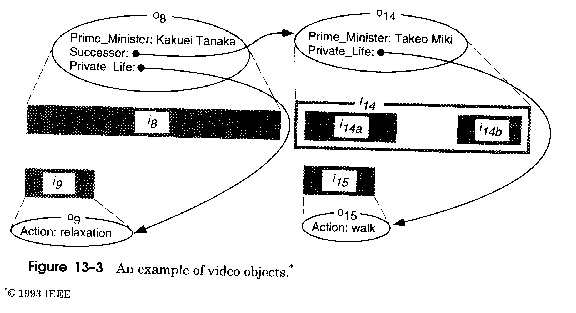
Inheritance Based on Interval Inclusion Relationship
Inheritable Attributes
|
Event_type, Location, President, Prime_Minister, Thematic_Person,
Year
|
Non-Inheritable Attributes
|
Action, Private_life, Subjects
|
Table 13-1 Inheritable attributes in the example video database.
Composition Operations for Video-Objects
Merging Video-objects:
example: figure 13-4
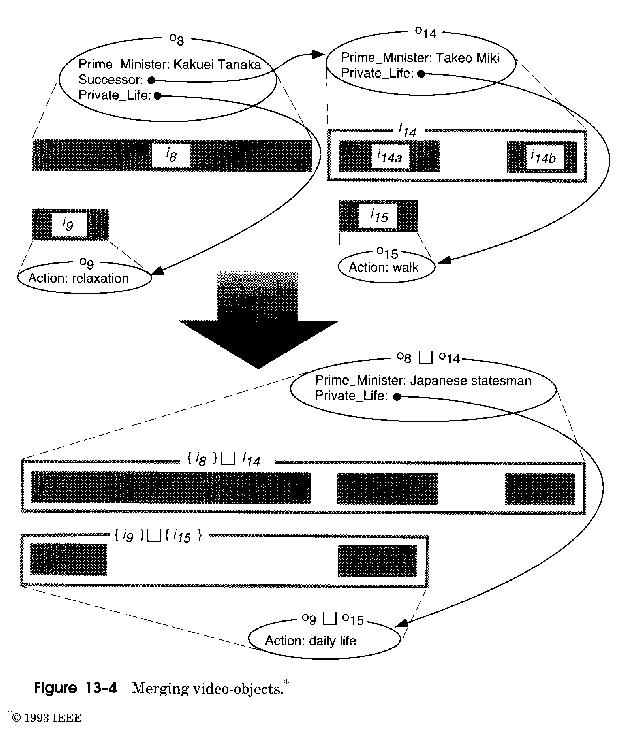
Overlapping video-objects:
example: figure 13-5
